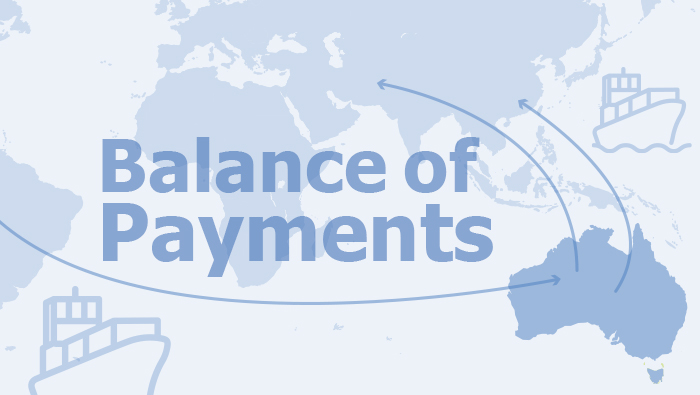March 2022
- Download the complete Bulletin 5.4MB

The Evolution of Interbank Settlement in Australia
Electronic payments are ubiquitous in modern economies and result in financial obligations between different financial institutions. These interbank obligations need to be settled in a way that is safe and efficient to promote the stability of the Australian financial system. In Australia, interbank settlement is performed in the Reserve Bank Information and Transfer System (RITS), which is owned and operated by the Reserve Bank. Since the introduction of real-time gross settlement services in 1998, the functionality of RITS has continued to evolve in line with payment innovations and the increasing importance that electronic payment systems play in supporting economic activity in Australia. This article considers key moments in this evolution as well as potential future developments.

Exploring the ‘Confidence Gap’
Previous Reserve Bank research has shown that female students and students from less advantaged backgrounds are more likely to report having a poor understanding of economics and lower confidence in their economics proficiency than other students. This is consistent with their falling participation in the subject. Using data from a survey administered by the Bank, this article investigates whether these negative perceptions are in line with students' observed proficiency or whether there is a ‘confidence gap’. It finds that females continue to report having poorer understanding and less confidence even after accounting for their observed proficiency, indicating a confidence gap. By contrast, students' self-perceptions by socio-economic status look to be in line with variations in their observed proficiency. These findings have implications for the design of interventions to encourage greater participation by these students and support increased diversity amongst the economics student body.

Tracking Consumption during the COVID-19 Pandemic
The COVID-19 pandemic was an unprecedented shock to the economy that caused large and unexpected changes in household spending behaviour. Restrictions on household activity limited opportunities to consume services and people switched to purchasing more goods. The recovery in consumption was much stronger than expected earlier in the pandemic because households quickly adapted to the pandemic shock with the support of significant fiscal and monetary policy measures. This article examines household spending during the pandemic using a range of sources of information that have enabled the Reserve Bank of Australia to track consumption in a timely way.

COVID-19 Health Risks and Labour Supply
There is evidence that concerns about becoming infected with COVID-19 at work have affected people's willingness to participate in the labour force in some countries. This article examines whether similar health concerns have contributed to a reduction in labour supply in Australia. It finds no evidence that these concerns had a discernible effect on labour supply during the COVID-19 outbreaks in 2020 and 2021. In early 2022, however, the substantial escalation in cases of the Omicron variant led a small number of people to avoid the workplace, at least temporarily.

The Significant Shift in Australia's Balance of Payments
Over recent years Australia has seen a large shift in its external accounts. In contrast to long-running deficits, the current account balance has now been in surplus for over two years, supported by record trade surpluses. The corollary of this is that the level of national savings has surpassed investment and Australia has become a net exporter of capital. This article examines these changes and highlights some key trends that are associated with this shift. These include the decline of foreign direct investment following the end of the mining boom, as well as an increase in purchases of foreign equities by Australian superannuation and investment funds. These developments have contributed to a significant decline in Australia's net foreign liability position as a percentage of GDP, which is at its lowest levels in a number of decades.

Are First Home Buyer Loans More Risky?
Despite the rate of home ownership in Australia drifting down over recent decades, 2020 saw a large increase in first home purchases. Given the high level of housing prices and household indebtedness, this raises the question of whether first home buyer (FHB) loans contribute disproportionately to financial stability and macroeconomic risks. FHBs appear to be riskier than other owner-occupiers, at least during the first five years of the loan. They have higher loan-to-valuation ratios and lower liquidity buffers. While this might suggest FHBs would be more vulnerable than other borrowers during a negative income or housing price shock, recent experience indicates that FHBs have been no more likely to report financial stress or be in arrears. One potential explanation is that FHBs have historically experienced better labour market outcomes than other borrowers.

Developments in Banks' Funding Costs and Lending Rates
This article updates previous Reserve Bank research on the ways in which developments in the composition and pricing of banks' funding sources have affected their overall cost of funds and influenced lending rates. Banks' funding costs declined a little over 2021 – after falling substantially in the previous year – supported by the Reserve Bank's policy measures. In aggregate, lending rates declined by more than funding costs. As a result, the major banks' average interest rate spread narrowed over the year. The decline in the aggregate lending rate primarily reflected strong price competition and ongoing refinancing activity, particularly in housing lending.

Australian Money Markets through the COVID-19 Pandemic
Money markets are used by banks and other entities to borrow and lend funds for short terms, and are central to the implementation and transmission of monetary policy in Australia. It is important that these markets function effectively in all economic conditions, including during the uncertain times of the COVID-19 pandemic. This article examines how the various money markets – including the cash, repo, bank bills, FX swaps and Treasury Notes markets – responded to events of the past two years. Ultimately it finds that Australian money markets have generally functioned well over this time. Short-term funding has remained readily available from these markets, as the RBA has substantially increased the supply of Exchange Settlement balances and investors have continued to desire safe and liquid investments. Over the past two years, money market rates have declined significantly as a result of the decreases in the cash rate target and the increased supply of Australian dollars in these markets.

Australian Securities Markets through the COVID-19 Pandemic
The COVID-19 pandemic disrupted many parts of the Australian economy, including securities markets. These markets play an important role in our economy, including as a source of funding for firms and in the transmission of monetary policy. This article describes how Australian markets for private securities weathered the impact of the COVID-19 shock. As the pandemic escalated, volatility in securities markets increased sharply, and some assets became difficult or costly to trade. The Reserve Bank, along with federal, state and territory governments in Australia, introduced policies to help support the economy and to ensure financial institutions were able to continue lending to households and businesses. These measures helped to support conditions in securities markets, which improved substantially from mid-2020. In turn, the recovery in securities markets helped to support the availability of low-cost funding for Australian businesses and households. Overall, the volatility in these markets at the beginning of the pandemic was brief when compared with the global financial crisis.
The graphs in the Bulletin were generated using Mathematica.
ISSN 1837-7211 (Online)
